How to Create a Digital Marketing Strategy (With Template and Examples)
Updated by Xtensio
The Digital Marketing Canvas provides a structured framework to communicate your product or service’s value proposition with marketing tactics and digital technologies. Marketers, entrepreneurs, developers, designers, sales, and customer success managers work together on the DMC to uncover marketing strategies that align with the digital customer lifecycle and accelerate business growth. Explore this template.
Xtensio is your team space for beautiful living documents.
Create, manage and share business collateral, easily.
Table of Contents
Step by guide to creating an impactful digital marketing strategy
Collaborate on the DMC to learn how marketing fundamentals and the customer lifecycle work together.
The Digital Marketing Canvas is a framework for developing your company’s digital marketing strategy – including what actions, campaigns, and tactics you’ll be using to reach your target buyers. You should create the canvas with members from your marketing, sales, development, product, design, and customer success teams to get a well-rounded view of your product or service’s unique value and how you can best communicate that to your target buyer throughout the customer lifecycle.
The Digital Marketing Canvas will help you define a strategy that:
- Attracts, convinces, and converts customers to your product or service
- Details the actions and channels you will use to reach your target customer
- Segments your marketing campaigns to provide value at every stage of the customer lifecycle
Collaborate across departments with Xtensio’s live, interactive Digital Marketing Canvas template. Add marketing, sales, customer success and management teams to pinpoint the best digital marketing strategy for your organization’s goals.
Paint the Big Picture
Define Your Mission, Vision, and Brand Story
The first and most important step in building your company’s digital marketing strategy is to understand your brand values, mission and vision. This will help you determine what your brand stands for and how that’s different from the competition so you can pinpoint the most useful digital marketing tactics. Loop in your marketing, management, sales and customer success teams to brainstorm your mission statement and outline your 5-10 year vision.
“Avoid all buzzwords. If there’s one word that describes your positioning statement, it should be “human.”
— Arielle Jackson, First Round Review
Here’s a suggested formula for creating your mission statement:
For the TARGET AUDIENCE who has this PROBLEM, your company provides this SOLUTION. Different from the MARKET LANDSCAPE, you have this ADVANTAGE by providing this REASON TO BELIEVE.
Your statement isn’t meant to be used for your marketing, but it will inform those efforts. It won’t be your tagline, but your tagline should spring from it. You can be flexible with how you format your brand positioning statement as long as you address the fundamental components of the brand positioning canvas.
For example, First Round Review highlights Amazon, which used the following positioning statement in 2001 when the company primarily sold books:
For World Wide Web users
Who enjoy books,
Amazon is a retail bookseller
That provides instant access to over 1.1 million books.
Unlike traditional book retailers,
Amazon provides a combination of extraordinary convenience, low prices and comprehensive selection.
To describe your company’s vision, explain where you want to be and how you want to make a bigger impact by achieving your mission. Where do you see your company in 5 years? What will the market landscape look like? Where will the community and the world be as a result of your organization’s mission?
How do these ideas come together to form your brand story and how will you communicate your brand message with potential buyers?
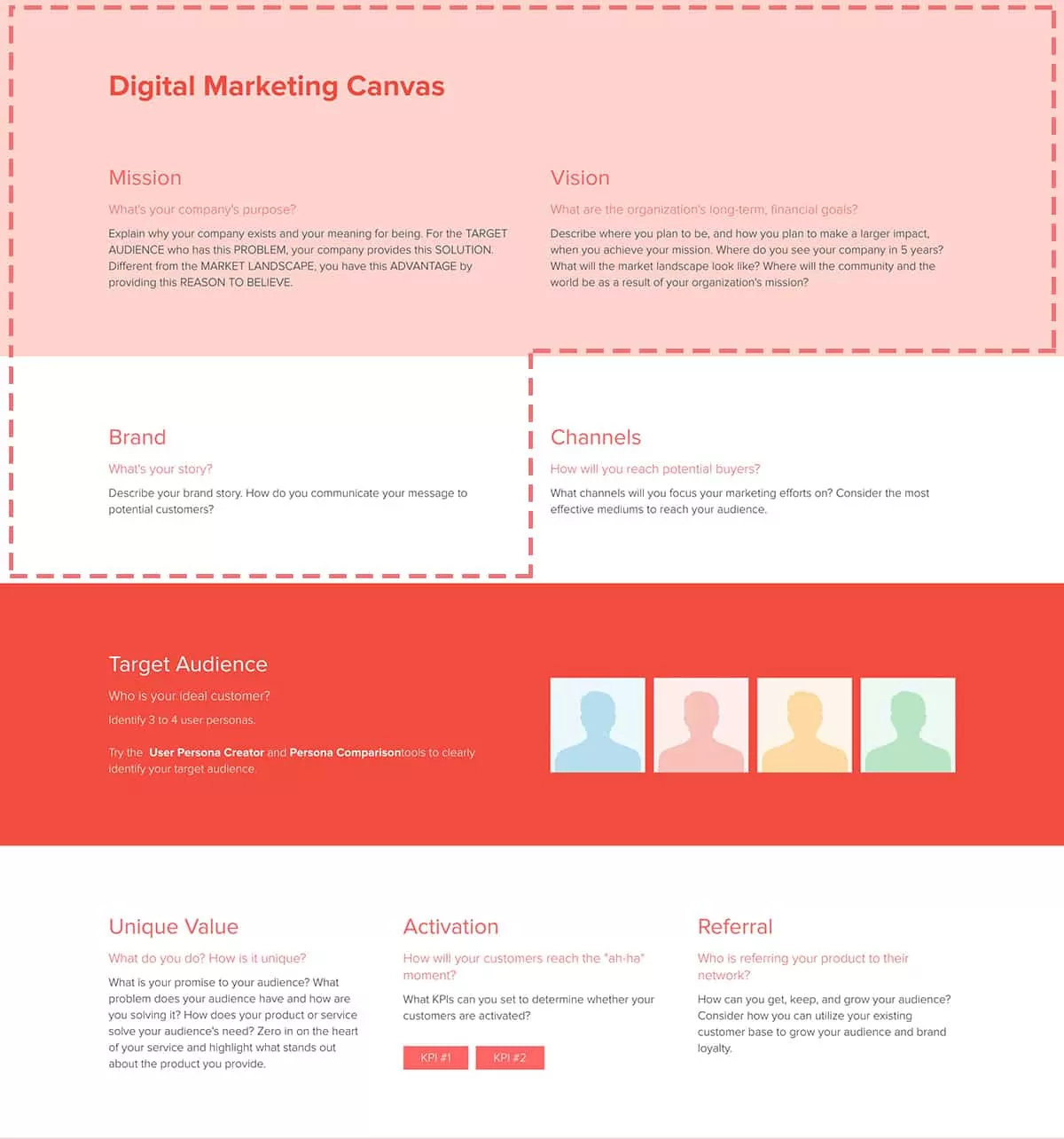
Brainstorm Digital Marketing Channels
It’s essential to define what channels you plan to target your marketing efforts on. Keep in mind that there are many different digital marketing approaches. Some focused on content, some on social media, or advertising. Brainstorm with your team to decide what channels your target audience is most likely to engage with.
The major digital marketing channels include:
- Search Engine Optimization (Google, Bing, etc)
- Pay-per-click or PPC (Google Ads, Social Ads, etc]
- Social media (Facebook, Instagram, Twitter, etc)
- Blogging (WordPress, Medium, etc)
- Display Networks (Google Display Network, Facebook Audience Network, etc)
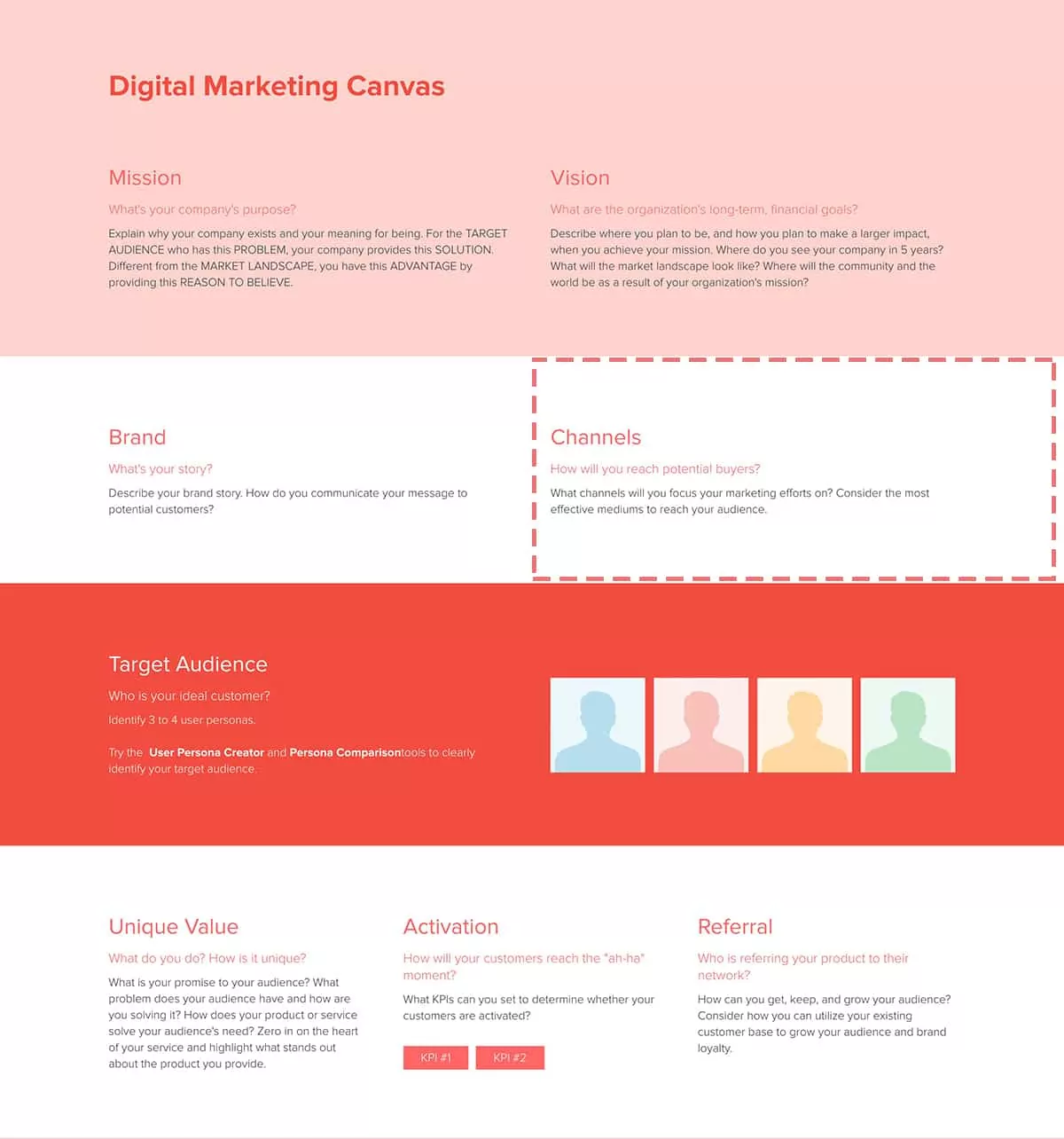
Define Your Target Audience
When defining your digital marketing strategy, you want to get a solid understanding of who your audience is and what motivates them. This will help you to assess which marketing platforms you can find your audience on on, how they’re interacting with your campaigns and what they want to see from you.
Segmenting audiences into traditional baskets like age, gender, income, family, location, etc. simply doesn’t cut it. Marketing professionals are developing hyper-targeted messaging to capture the nuances to better reach their audience. There is a flip side to this. Each user segment will have a variety of unique IDs; what is it that connects them? What is it about your brand that draws people in?
To further explore this road, try Xtensio’s User Persona Creator or User Persona Comparison tools. These are good preliminary steps to analyze your audience as it grows and evolves.

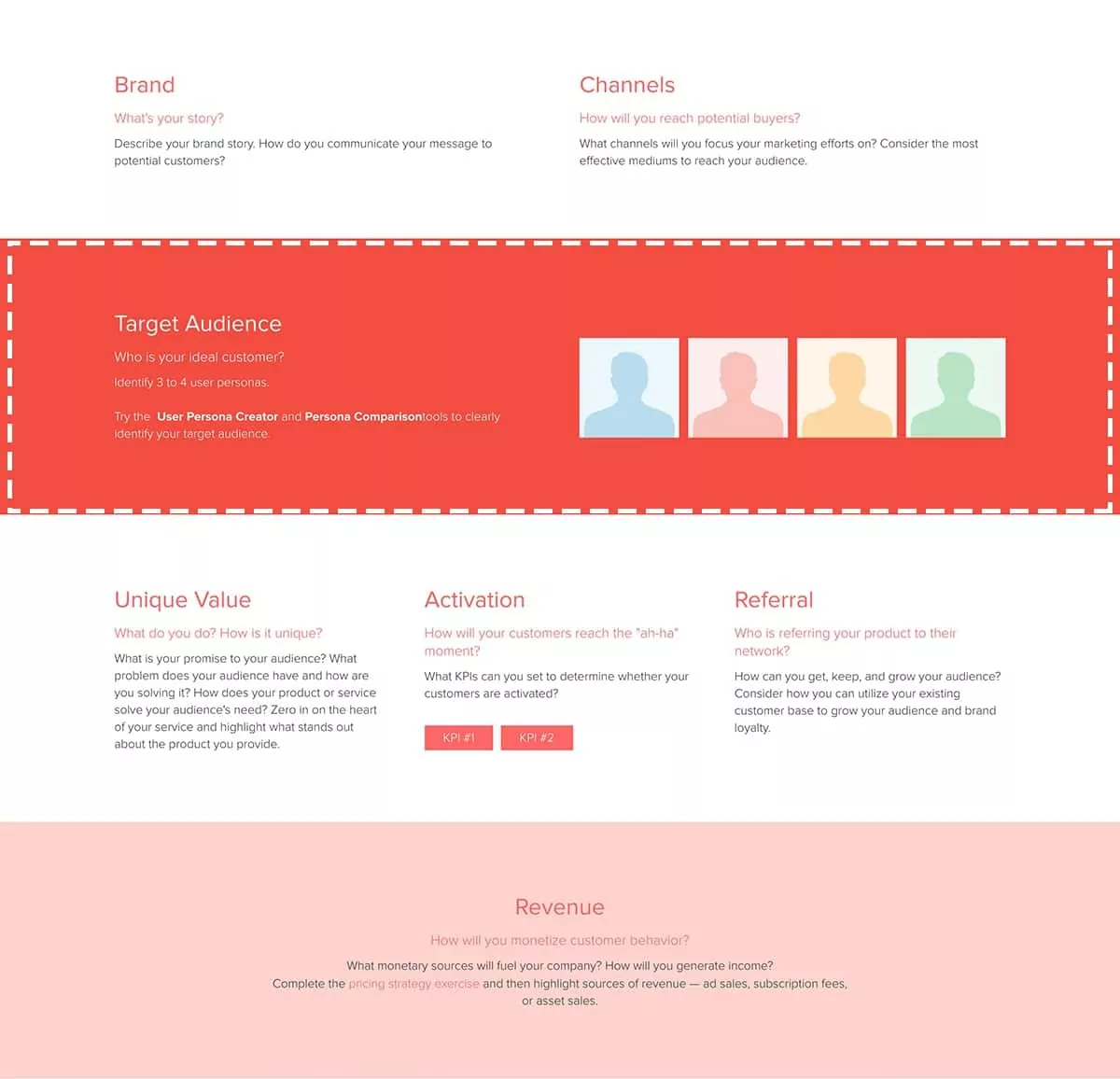
Uncover Your Product/Service’s Unique Value
Now that you have the lay of the land, you want to explain why your product or service is the best option for your target audience. Do you offer a feature that puts you ahead of the pack? Is your pricing model more competitive? The differentiators may be in your user-facing product offering, but they could also be in what happens behind the scenes. Your talented and dedicated team, your unique experience in the industry, your processes, your efficiency, anything proprietary you’ve developed—whatever distinguishes “your method” of conducting business. By considering what distinguishes you from your competitors, you can start to think about how to convey those differences effectively.
With a clear understanding of your customer expectations, you can create a better customer experience and explain why people should use your product or service. Explain your product or service’s unique value. What evidence can you point to that supports this value? (If you’re having trouble filling out this section, you can work on Xtensio’s SWOT Analysis tool to better understand your company’s strengths, weaknesses, opportunities and threats.)
You can also tap into these SWOT alternatives which are more solution-driven or aspirational.

Related how-to guides and free templates!
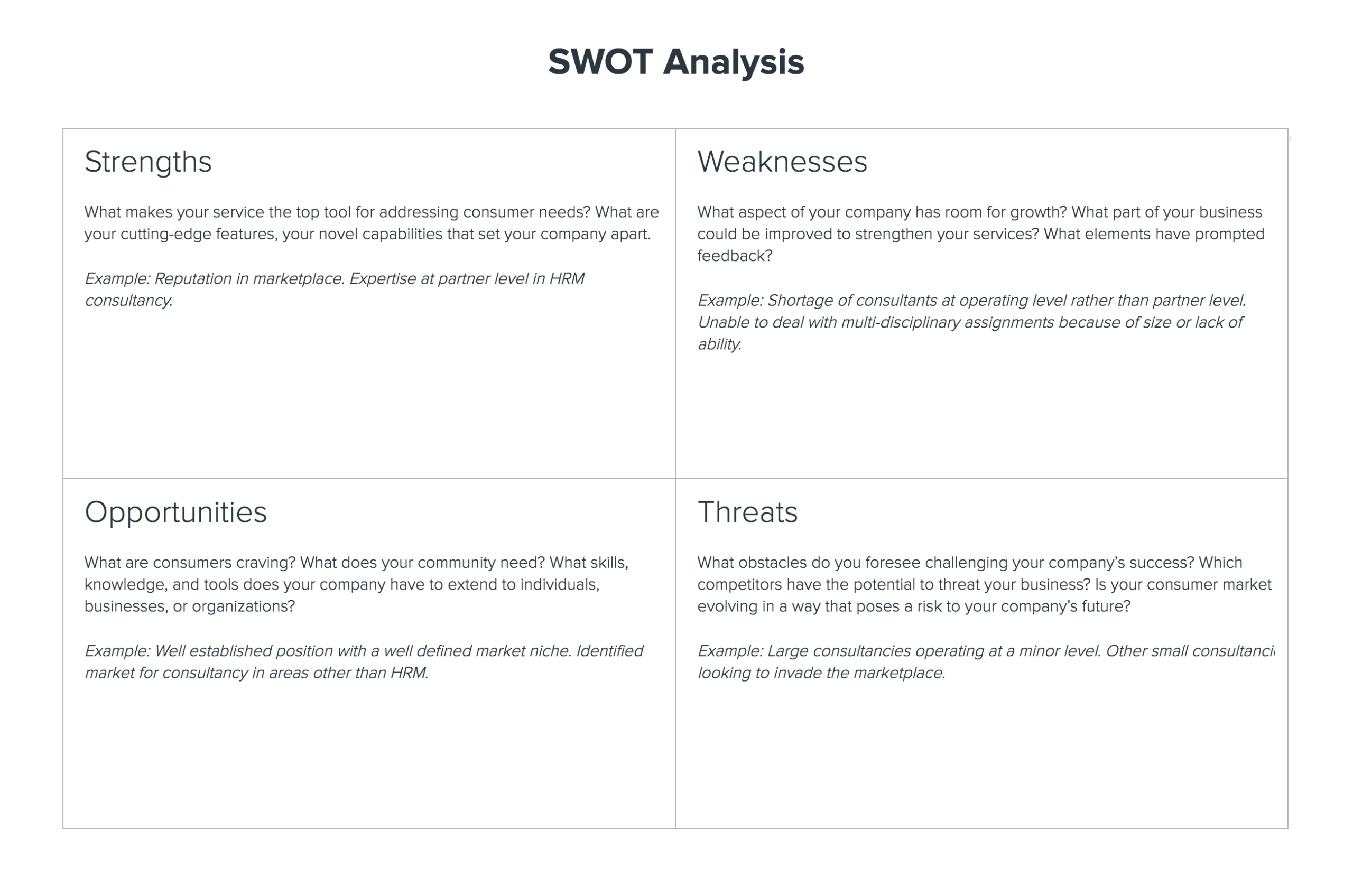
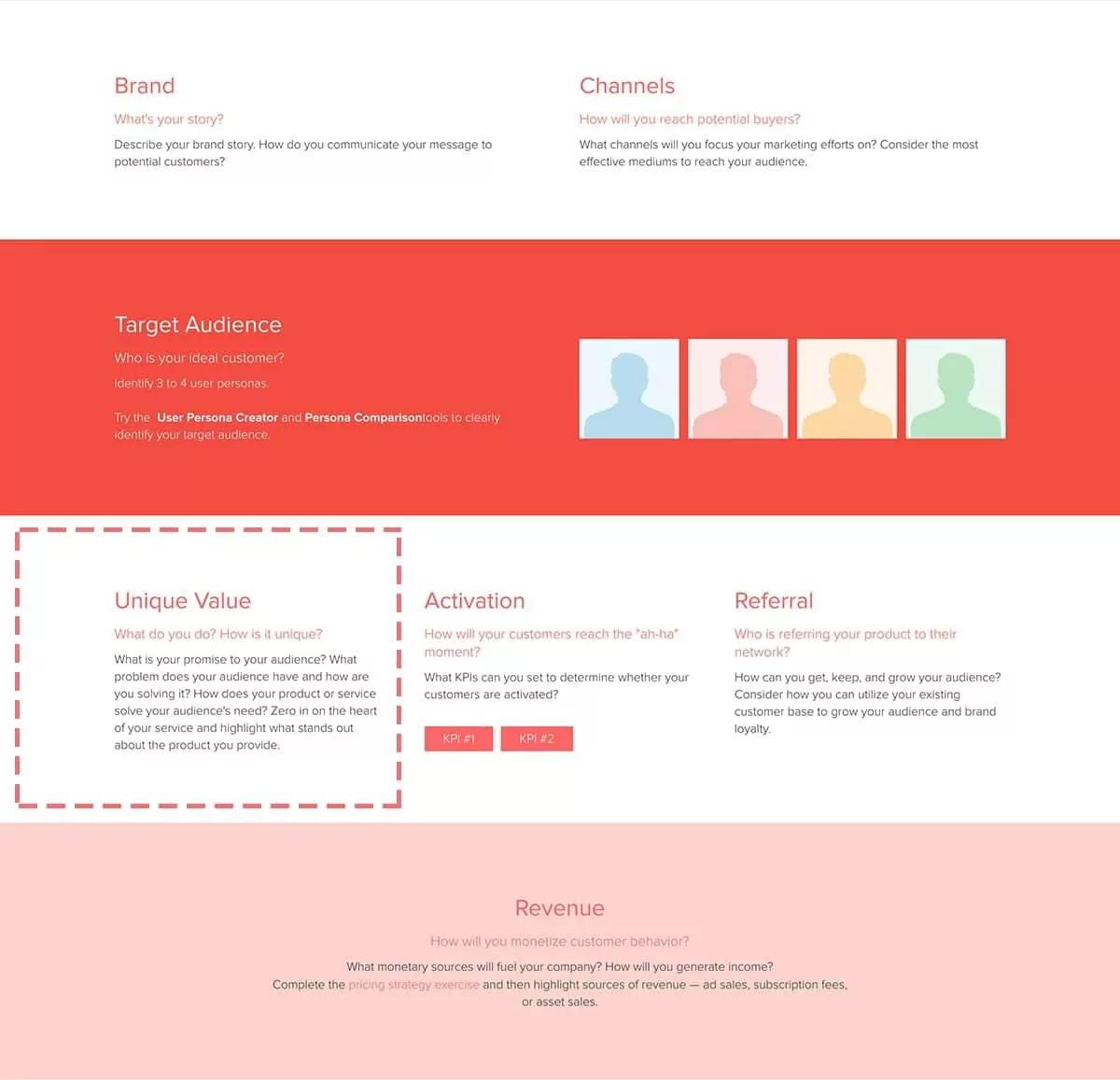
Detail Your Activation & Referral Initiatives
Now that you’ve identified who your target is, where you can find them, and what value your product or service offers to this group, it’s time to choose KPIs you can track to ensure you’re meeting your marketing objectives. Focus on metrics that show the user has reached the “ah-ha” moment – this could be a specific number of interactions with your product, a milestone reached, purchase initiated etc.
Once you’ve determined your activation KPIs, consider how you can utilize activated and recurring customers to promote and grow your audience. Map out the specific tactics that you’re going to take in order to accomplish your goals.
A few of these tactics might include:
- Sharing user-generated content on social media to build network relationships, increase visibility and brand recognition.
- Placing lead generation widgets or lead magnets on the sides of all guest blog posts, along with featuring a CTA at the end of posts to get in touch.
- Launching an affiliate program with incentives for referrals and upgrade.
- Encouraging reviews and testimonials with automated surveys, messages etc.
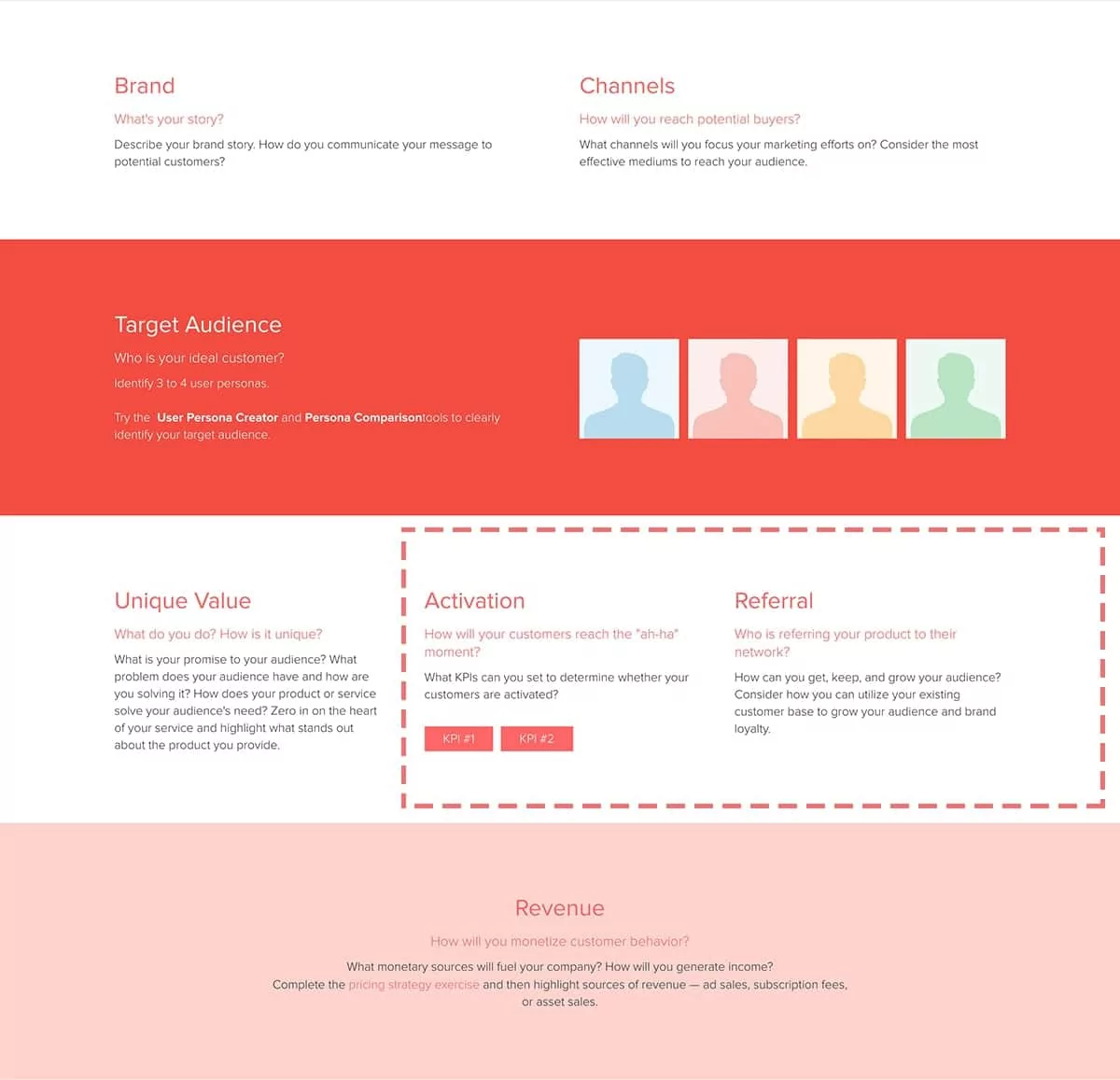
Calculate Your Digital Marketing Strategy ROI
In order for your Digital Marketing Strategy to be successful, it has to generate revenue to justify the cost of marketing campaigns, paid ads and other tactics. Determine how your product or service will monetize customer behavior and generate income for your business. Highlight your sources of revenue — ad sales, subscription fees, or asset sales.
Once you decide where your revenue is coming from, you can determine the ROI for your marketing strategy depending on your overall goals. A startup technology firm, for example, may be more concerned with the number of leads generated, while an e-commerce company may be more concerned with producing straight sales without putting prospects through the buying cycle. The more clear you are about what ROI means to you, the better your results will be.
To really dig into how your product can generate maximum revenue, complete the pricing strategy exercise.
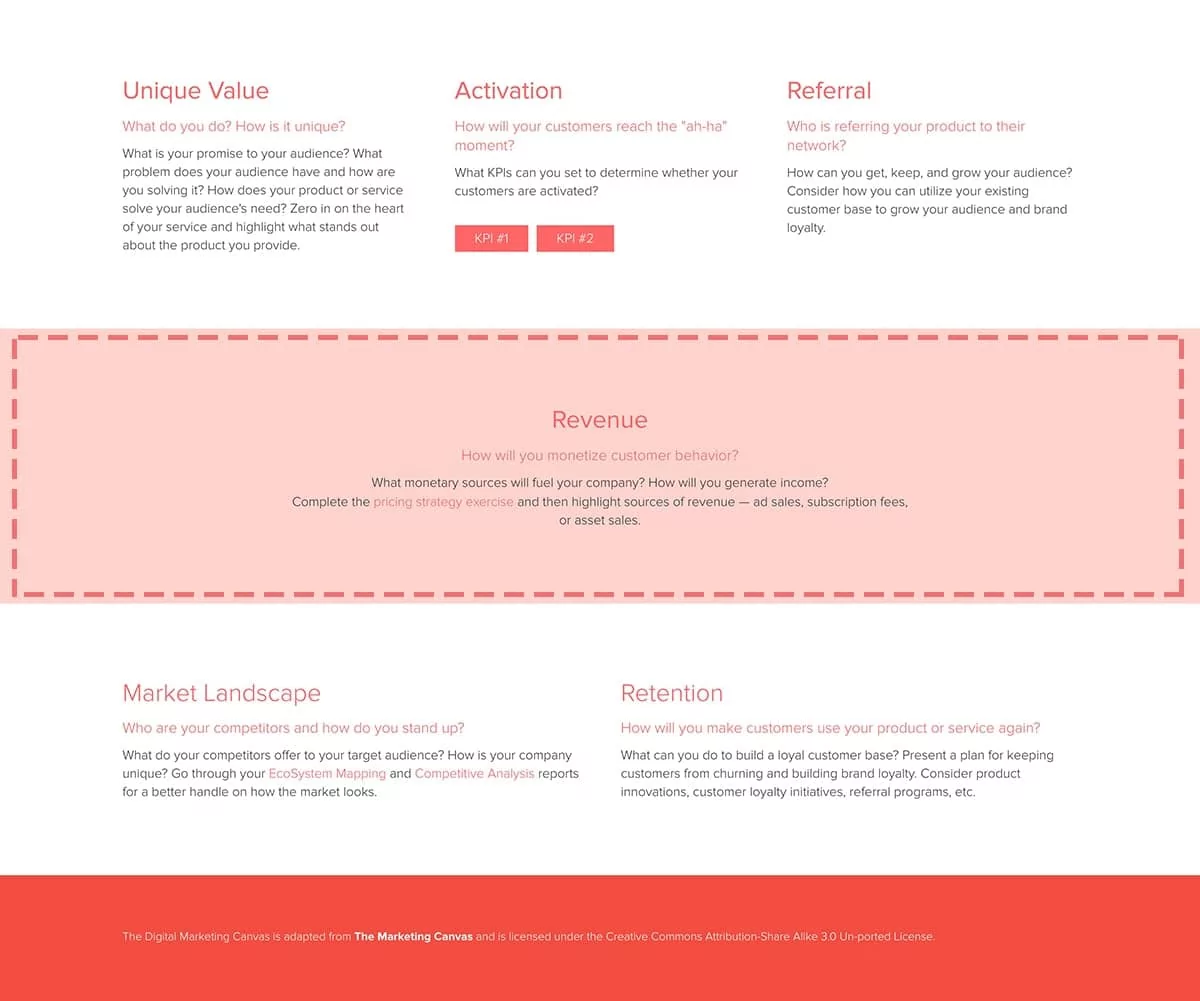
Describe the Market Landscape
How will you fit in the market? Who are your biggest competitors? How is your audience currently solving “the problem”? Often, ideas are born in response to the rise of a dominant player in the marketplace. In other cases, business leaders will assess the landscape, and enter with a similar offering but a clear differentiating angle, going head-to-head with the competition. Many companies underestimate their competition in their segment of the market. Anticipating where you’ll fit in the market landscape is crucial for determining what will make you stand out.
“Where there’s no competition, there’s no market. This is why startups who have “no competition” have trouble engaging partners and making sales. Your competitive set is part of your overall value proposition. So choose it with care… If you position yourself credibly relative to worthy alternatives, that speaks well on your behalf.”
— Geoffrey A. Moore, Escape Velocity
Keep in mind: Competitors validate that the problem you’re trying to solve has a market and that you have the potential to get a slice of that market by differentiating yourself well enough.
You can tap into Xtensio’s Competitive Analysis template to gain a deeper understanding of your competition. It will give you a good start in comparing the top players out there.
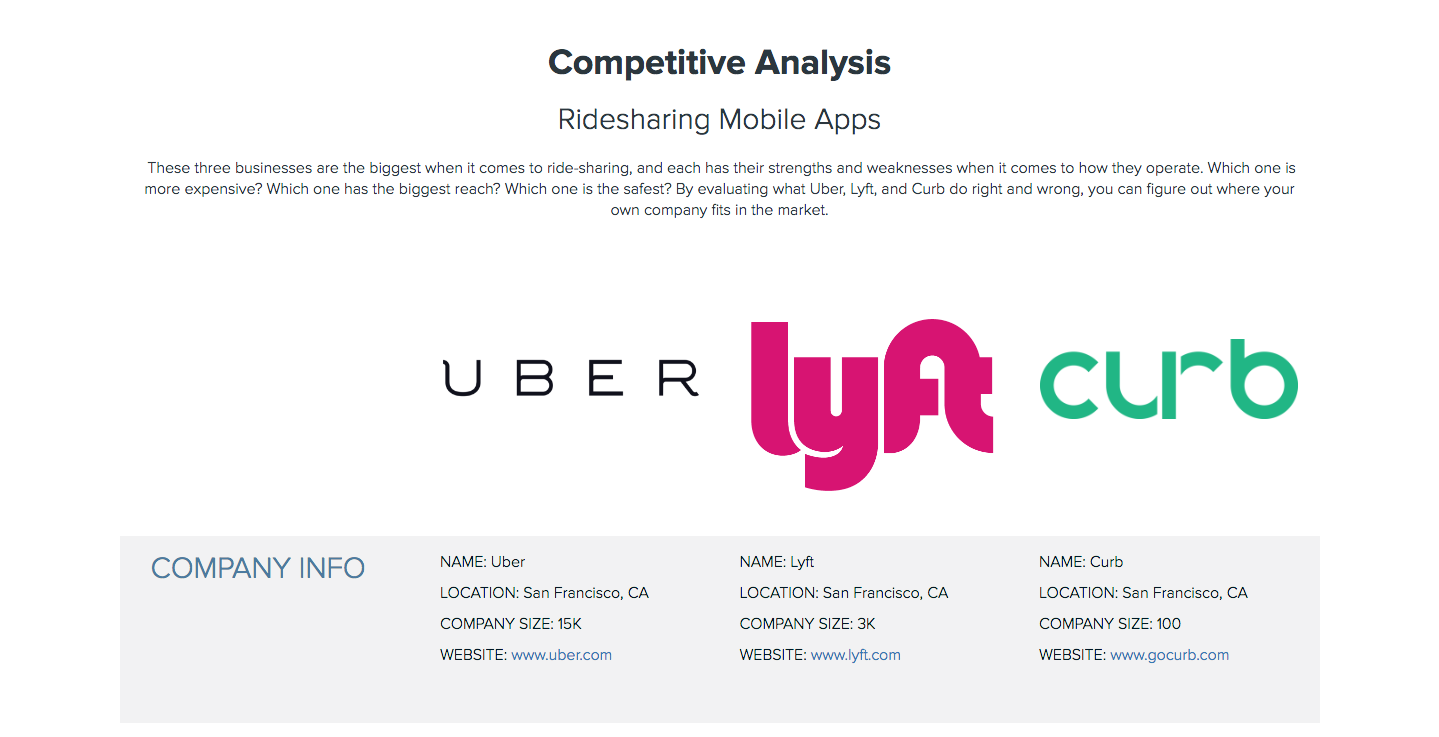
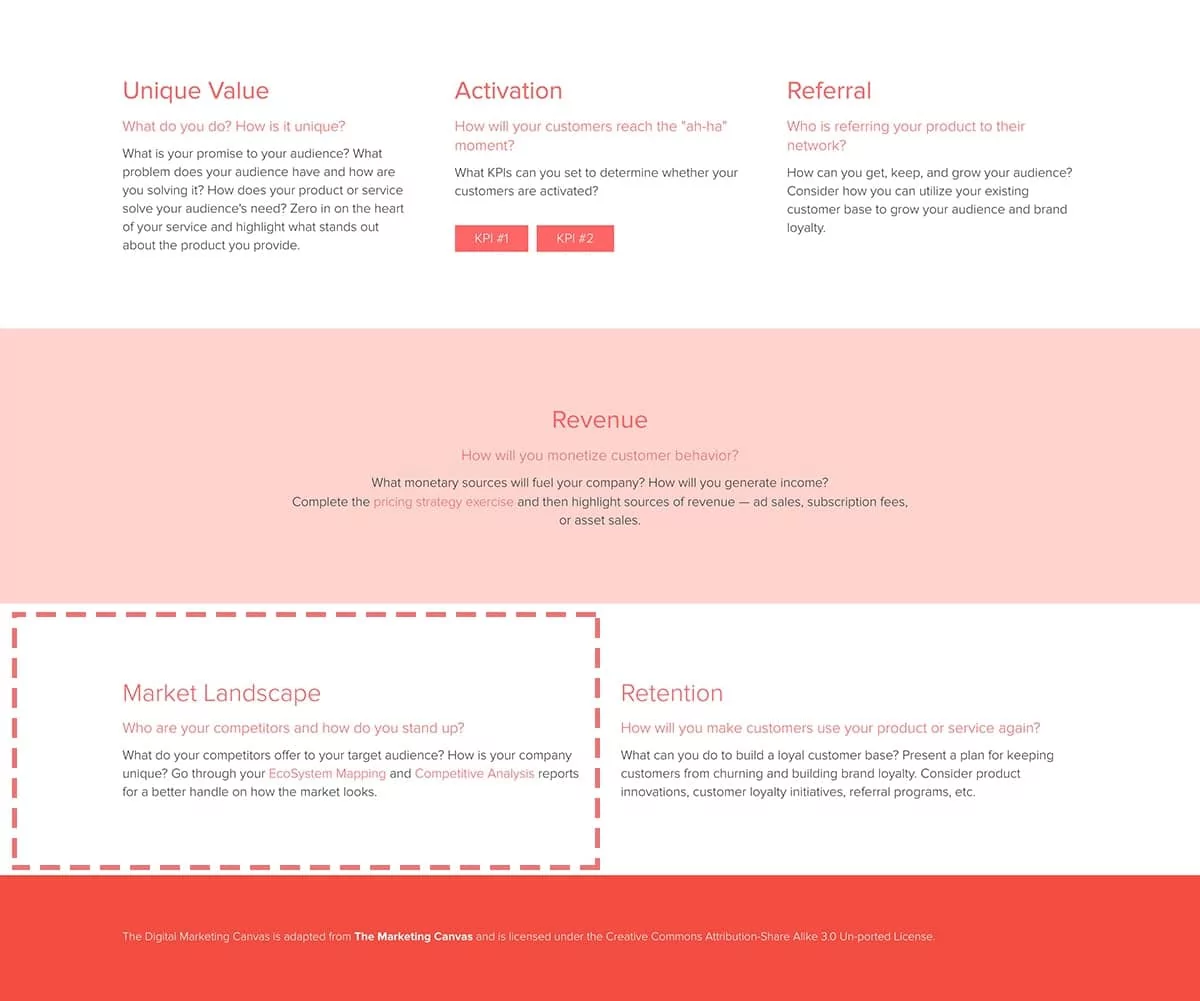
Outline Retention Strategies & Success Tracking
Marketing is no longer separate from sales and customer success, but all three work together to create ongoing revenue, especially in the SaaS world. How will you make buyers continue to use your product or service after the intial purchase? What can you do to build a loyal customer base? Present a plan for keeping customers from churning and building brand loyalty. Consider product innovations, customer loyalty initiatives, referral programs, etc.
You can tap into Xtensio’s Customer Success Plan template to outline an ongoing plan for building customer relationships and encouraging expansion and retention.
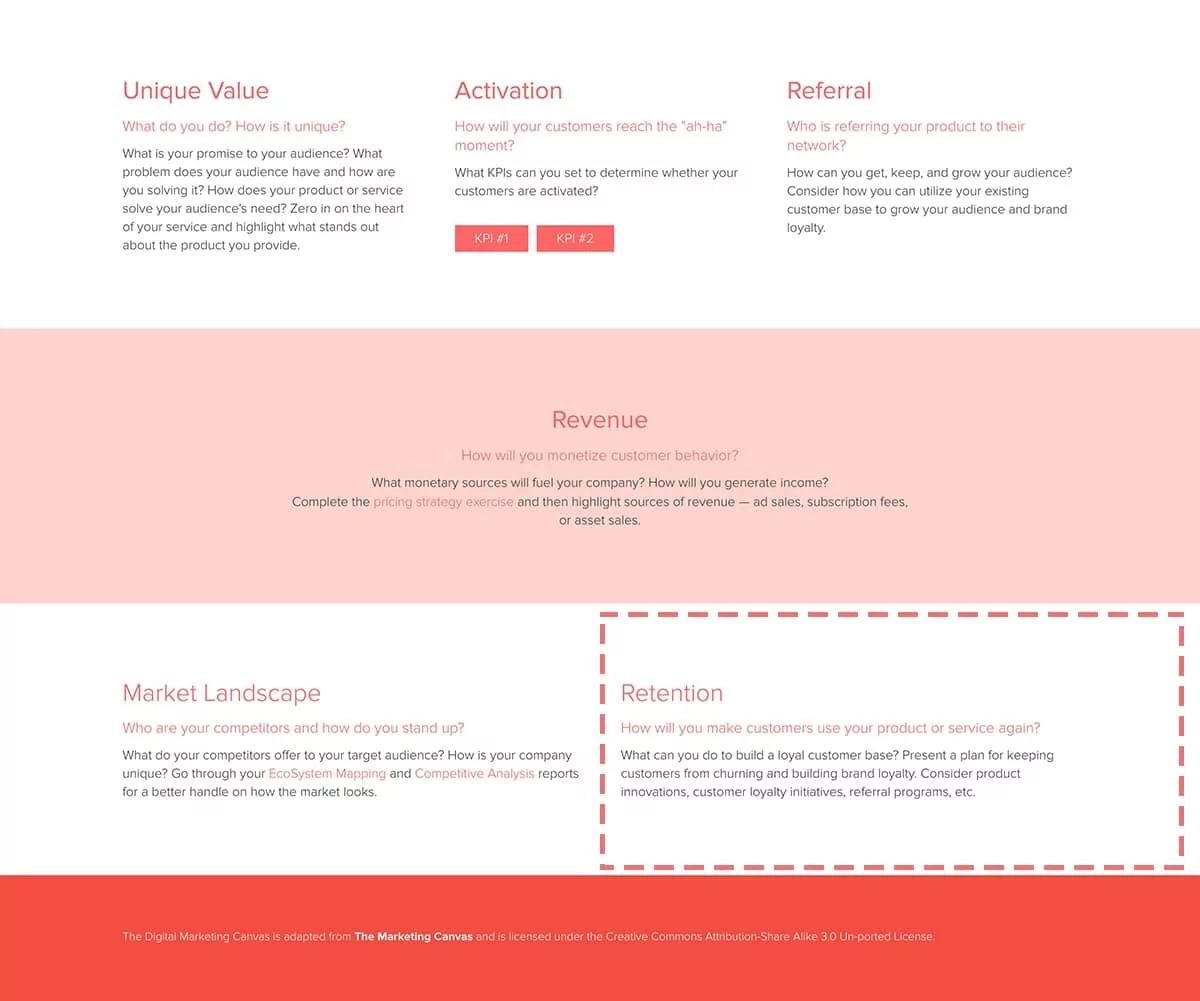
Bringing it all Together
Defining your digital marketing canvas shapes your company’s marketing, sales and customer success strategies. The digital marketing canvas becomes a resource when you’re faced with the question of whether or not a potential decision fits into your marketing strategy and company growth goals. But the work doesn’t stop after you’ve filled out the canvas – the most important part is defining your marketing plan and analyzing the results of marketing efforts with a monthly marketing report. We have to measure every action using KPIs to figure out if we earned the ROI we expected. As your company evolves, your team grows, the marketplace transforms, there will be times to revisit and keep your digital marketing strategy in check. Keep your digital marketing canvas and other strategy exercises in a collaborative channel so your team has access whenever they need, and share the live link to keep stakesholders updated on your team’s progress.
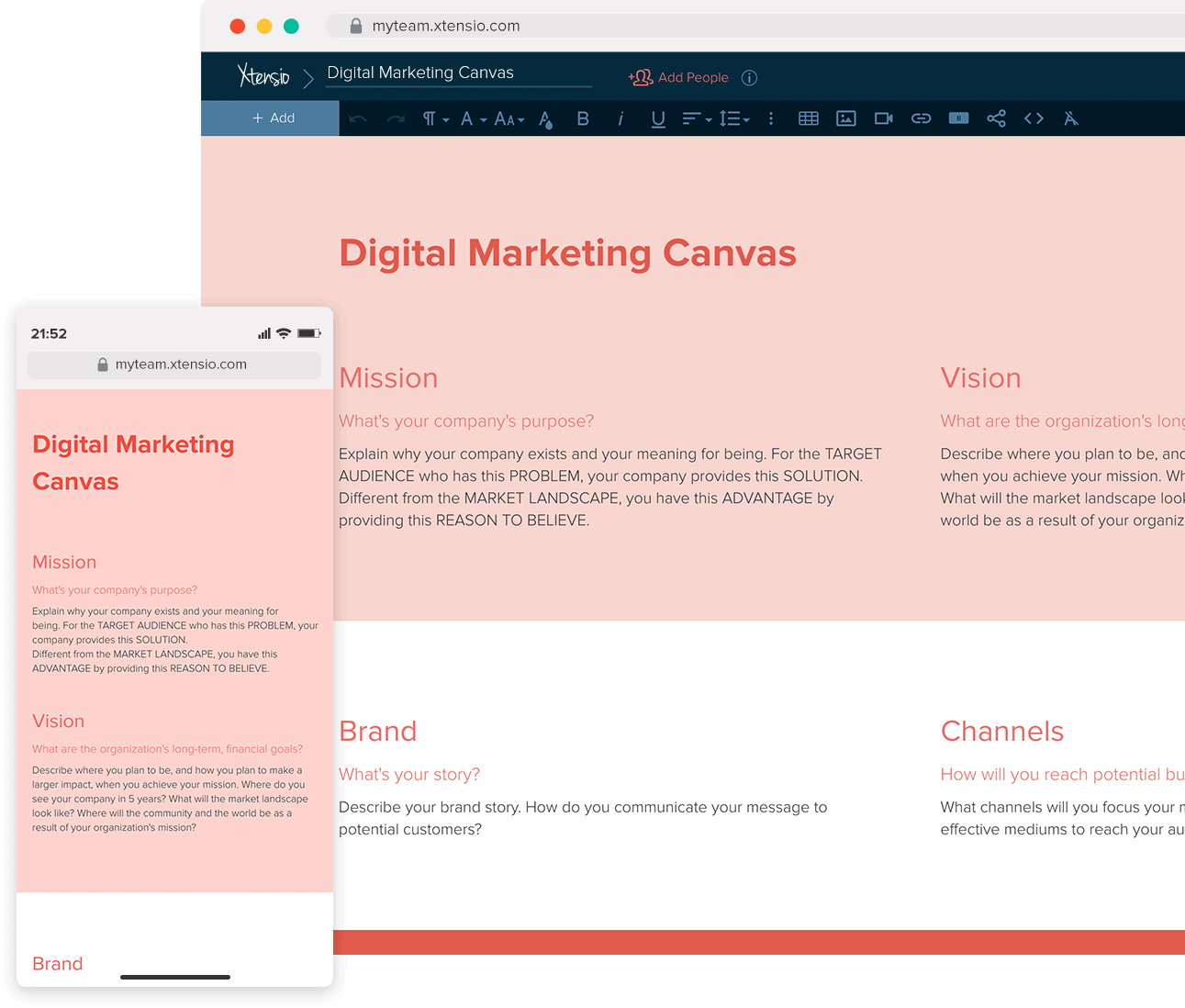
Design, manage and share beautiful living documents… easily, together. Explore Xtensio
- Click and edit anything… together.
- Customize to match your branding.
- Share with a link, present, embed or download.







